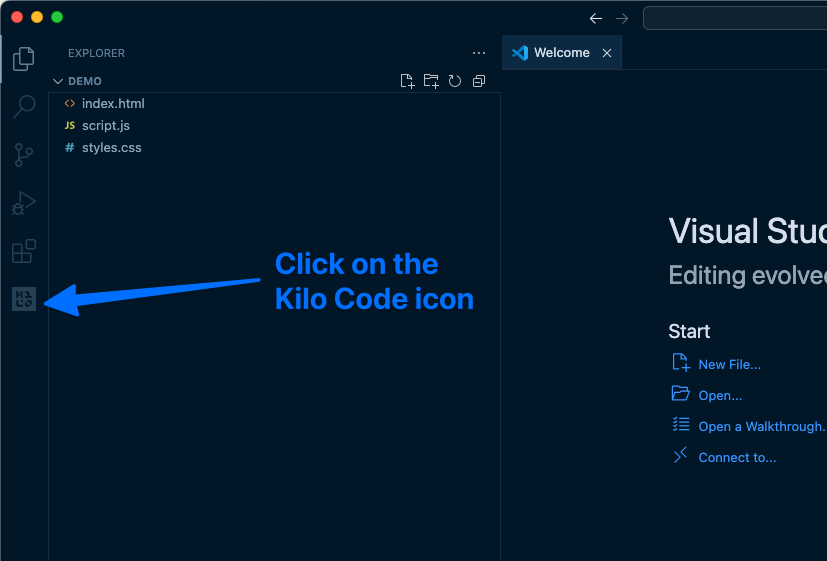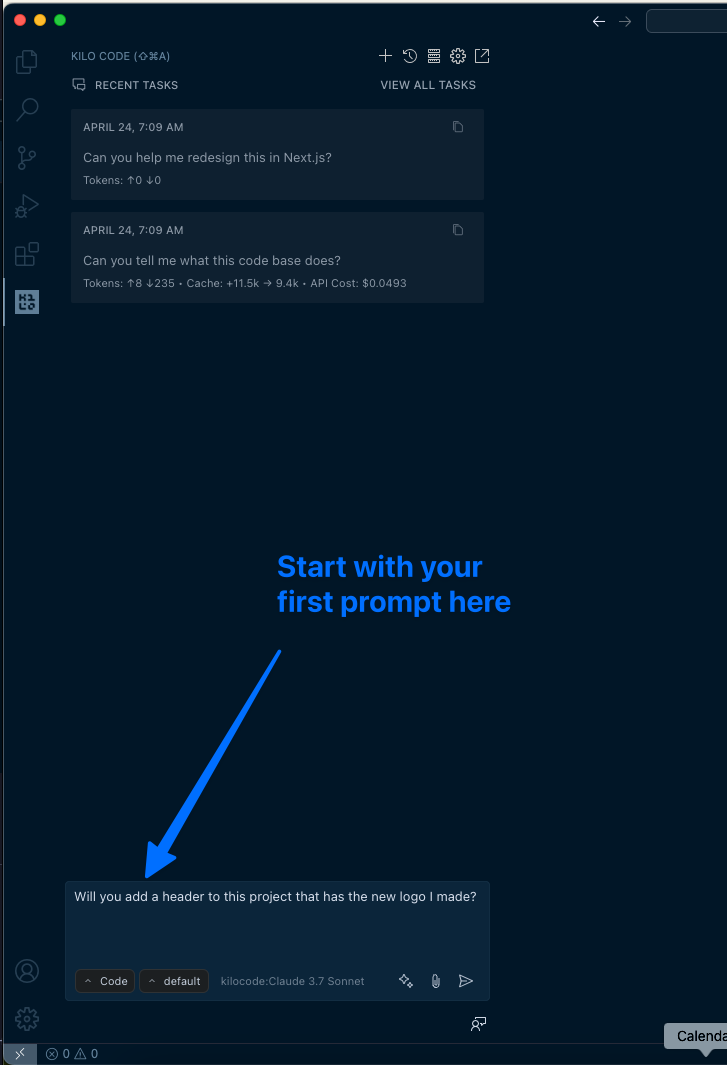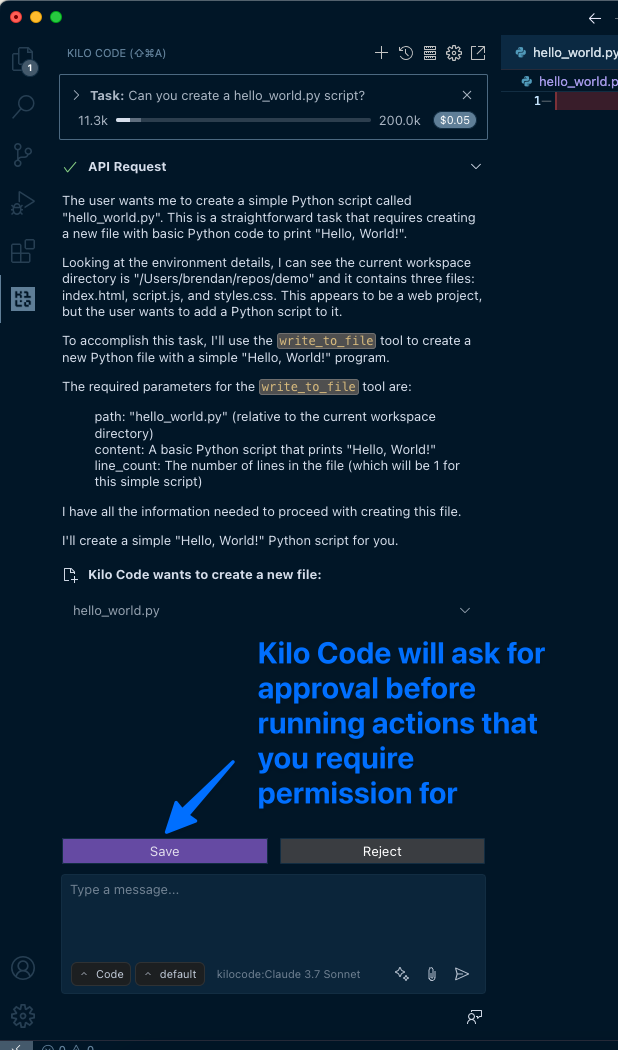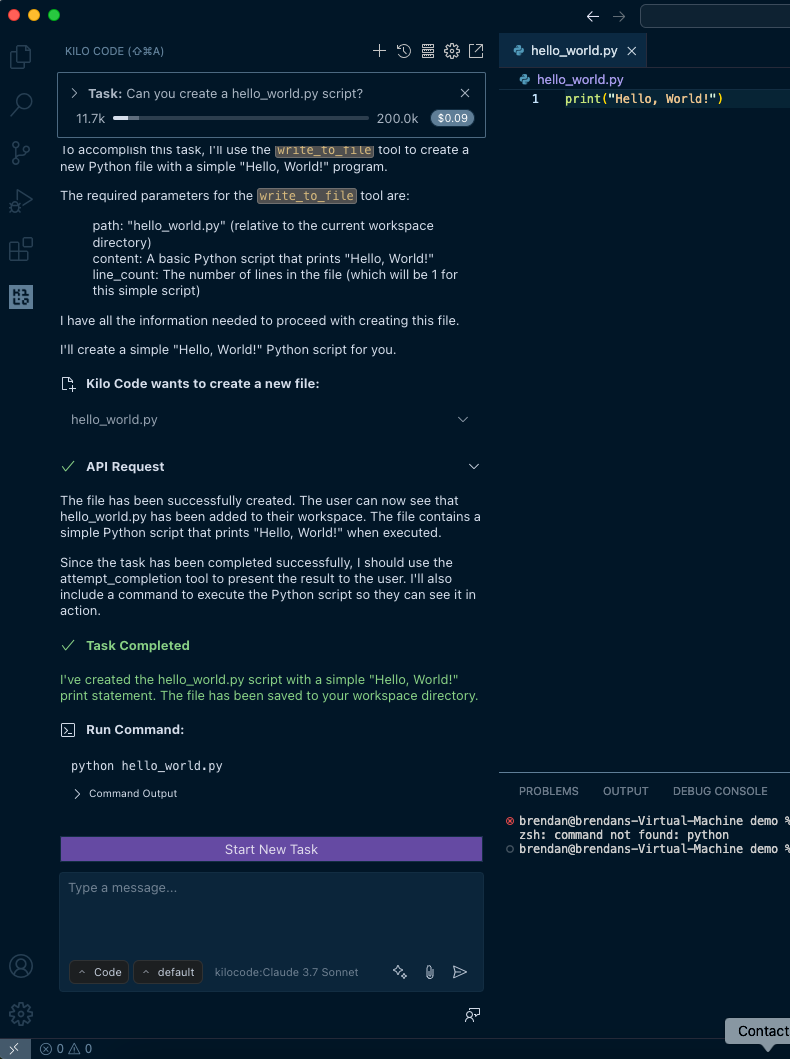Starting Your First Task with Kilo Code
This quick tour shows how Kilo Code handles a simple request from start to finish.
After you set up Kilo Code, follow these steps:
Step 1: Open the Kilo Code Panel
Click the Kilo Code icon () in the VS Code Primary Side Bar (vertical bar on the side of the window) to open the chat interface. If you don't see the icon, verify the extension is installed and enabled.

The Kilo Code icon in the Primary Side Bar opens the chat interface.
Step 2: Type Your Task
Type a clear, concise description of what you want Kilo Code to do in the chat box at the bottom of the panel. Examples of effective tasks:
- "Create a file named
hello.txtcontaining 'Hello, world!'." - "Write a Python function that adds two numbers."
- "Create an HTML file for a simple website with the title 'Kilo test'"
No special commands or syntax needed—just use plain English.

Enter your task in natural language - no special syntax required.
Step 3: Send Your Task
Press Enter or click the Send icon () to the right of the input box.
Step 4: Review and Approve Actions
Kilo Code analyzes your request and proposes specific actions. These may include:
- Reading files: Shows file contents it needs to access
- Writing to files: Displays a diff with proposed changes (added lines in green, removed in red)
- Executing commands: Shows the exact command to run in your terminal
- Using the Browser: Outlines browser actions (click, type, etc.)
- Asking questions: Requests clarification when needed to proceed

Kilo Code shows exactly what action it wants to perform and waits for your approval.
- In Code mode, writing capabilities are on by default.
- In Architect and Ask modes, Kilo Code won't write code.
The level of autonomy is configurable, allowing you to make the agent more or less autonomous.
You can learn more about using modes and auto-approving actions.
Step 5: Iterate
Kilo Code works iteratively. After each action, it waits for your feedback before proposing the next step. Continue this review-approve cycle until your task is complete.

After completing the task, Kilo Code shows the final result and awaits your next instruction.
Conclusion
You've completed your first task. Along the way you learned:
- How to interact with Kilo Code using natural language
- Why approval keeps you in control
- How iteration lets the AI refine its work
Ready for more? Explore different modes or try auto-approval to speed up repetitive tasks.